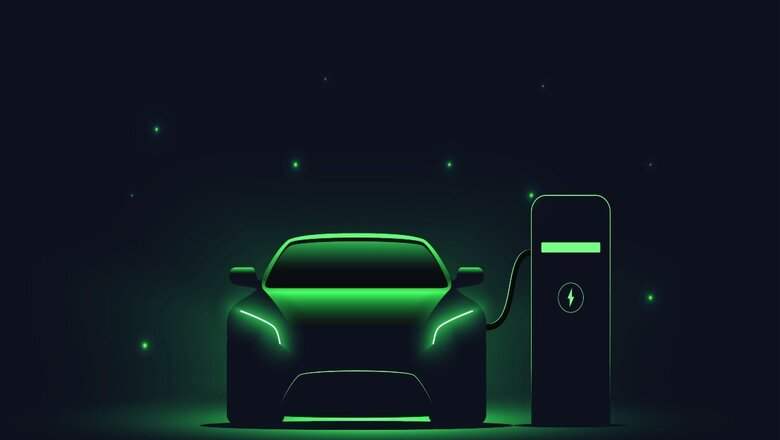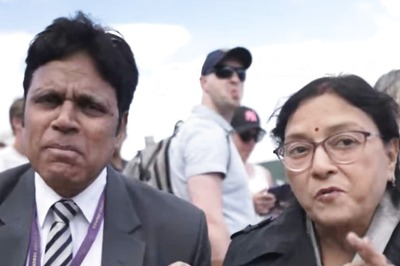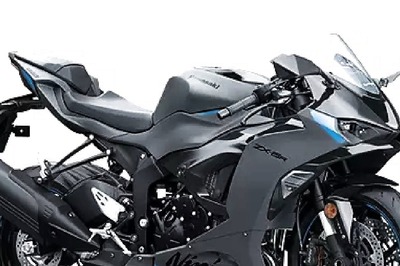
views
India is the world’s biggest electric vehicle market in the making. As a matter of fact, India is not just focusing on becoming the world’s largest EV market, but is also working towards building the world’s most robust electric vehicle ecosystem. The year 2023 was a landmark of sorts in India’s quest for greater EV adoption. The nation recorded a significant uptick in electric vehicle sales last year, with over 1.5 million units being sold – a jump of 50 per cent from 2022. The overall share of EVs in India’s auto sales has risen sharply to 6.38 per cent in 2023 from 1.75 per cent in 2021. This is indicative of EVs finding a greater audience among India’s automobile-purchasing class. This year, the target of adding over two million electric vehicles to the domestic market looks easily attainable.
Driving the EV surge in India are two-wheelers. The electric two-wheeler market has seen a significant sales increase of 34.42 per cent in the third quarter of FY24 compared to the second quarter. On a year-on-year basis, an 11.16 per cent growth was seen in the third quarter of FY24 compared to the same period in FY23.
Earlier this month, Prime Minister Narendra Modi turned his attention to the electric vehicle segment, and told a gathering of businessmen and executives at Bharat Mobility Global Expo to “think out of the box and work in collaboration”. Modi spoke of the emergence of a neo-middle class that has just risen out of poverty and is now looking to purchase vehicles to fulfill corresponding mobility requirements. Perhaps the biggest takeaway from the Prime Minister’s address was his call for automakers to ensure that there is a made-in-India vehicle running across most of the markets globally.
PLI and Incentives: Powering India’s EV Journey
India is expected to become the world’s largest electric vehicle market by 2030, surpassing the likes of China and the United States. The EV market is expected to grow at a compound annual growth rate of 49 per cent, a trajectory which will lead to annual sales of close to 10 million units by 2030.
At present, India is the third-largest automobile market in the world. However, electric vehicle penetration is currently at just about 3-5 per cent, even as India is dubbed as the fastest-growing electric vehicle market. NITI Aayog has set a target of ensuring 30 per cent EV penetration in the country by 2030. So, the question arises: What is being done to achieve this goal?
For starters, the support being provided by the Modi government through the FAME scheme is boosting the uptake of electric vehicles, while an incentive program for advanced battery manufacturing is poised to drive down battery costs, further fuelling the shift towards electric mobility. Under the ‘Faster Adoption and Manufacturing of (Hybrid &) Electric Vehicles in India’ scheme, manufacturers sell discounted EVs and then seek the subsidised amount from the Centre. In fact, India will soon unveil a new scheme to incentivise electric vehicle purchases and expand charging infrastructure.
Since its inception in 2019, FAME II has supported the sales of approximately 1.2 million motorcycles, 141,000 three-wheelers, and 16,991 four-wheelers through subsidies. Out of the allocated Rs 10,000 crore for FAME II, Rs 5,829 crore has been distributed to date.
Experts are foreseeing an investment of Rs 94,000 crore ($12.6 billion) dedicated to the electric vehicle ecosystem over the next five years. In the interim budget presented by Finance Minister Nirmala Sitharaman this month, the EV sector was given an expected boost. This time, care has been taken to not just focus on electric vehicles as a standalone subject, but also create an entire EV ecosystem in the country.
It is understood that the EV revolution in India will require new storage, distribution, and logistics facilities. As a result, the government and the EV industry both anticipate a surge in demand for warehouses that can efficiently handle the manufacturing, storage, and distribution of EV parts and products. Moving forward, efforts will be made to have a robust storage and warehousing infrastructure in place to aid India’s growing EV demand.
India’s Bold Experiment: Solar Power Fused into Electric Vehicles
The interim budget laid a special focus on supporting manufacturing and charging infrastructure. Remember, there is a reason why Indians are not taking the EV plunge at a rate the government would like them to. Most consumers cite the lack of a uniform and pan-national EV charging infrastructure as the primary reason why they have not yet purchased electric vehicles. The Modi government has a plan to rapidly change the equation on this front, and the recently launched PM Suryoday Yojana is a step in that direction. Under this scheme, the Centre will provide rooftop solar installations in the houses of middle and poor-class people in the country. Close to 10 million households would get up to 300 units of free electricity every month as a result.
Apart from the push for every home to have EV charging capacity in the future, work is also underway to create sufficient public charging stations across India. In March 2023, the Ministry of Heavy Industries sanctioned Rs 800 crore to Indian Oil, Bharat Petroleum and Hindustan Petroleum to set up 7,432 public fast charging stations across the country under the FAME II scheme.
Once the government achieves the target of rooftop solar installations across millions of households, the middle and poor classes of Indians could very well emerge as the biggest propellants of an electric vehicle surge. Already, in cities of Rajasthan, Gujarat, and Kerala, 45 to 50 per cent of electric vehicle users are using rooftop solar power to charge their vehicles. The Modi government intends to make this a national phenomenon that can catapult India to emerge as one of the most EV-friendly nations of the world.
The government will also encourage the greater adoption of electric buses for public transport networks through a payment security mechanism. In August last year, the government launched the PM e-Bus Sewa programme. Under this initiative, 10,000 e-buses will be deployed across 169 cities, and the scheme will cover cities with a population of more than three lakh while priority will be given to those that do not have organised bus services.
Startups: Drivers of an Electric Vehicle Revolution in India
Startups have emerged as crucial participants of not just India’s EV revolution, but the broader global pivot towards cleaner and sustainable modes of transportation. Startups have become crucial to innovation in the EV space. Buoyed by friendly government policies and a growing appetite for innovation, Indian startups are coming up with sustainable solutions for mobility. About 60 startups today are leading the charge in making India a world leader on the EV map.
Apart from creating new jobs and popularising electric vehicles in the country, these startups are also helping reduce carbon emissions and offering a cheaper alternative to fossil fuels. How electric three-wheeler rickshaws have emerged as the lifeline of short-distance travel in the capital city of Delhi and other urban centres is perhaps the best example of Indian startups affecting transformation in mobility.
Indian startups such as Ather Energy, Altigreen, BluSmart, 3EV Industries, AMO Mobility, Exponent Energy and many others are playing an important role in the country’s journey towards greater EV penetration. Another startup, Exicom Tele-System, which runs an electric vehicle charging solutions business and also provides critical power solutions at telecommunication and enterprise sites is planning to get publicly listed soon. An Initial Public Offering (IPO), in fact, could come as soon as towards the end of February. The company aims to raise approximately Rs 430 crore through its public offer, out of which Rs 330 crore would be through the fresh issuance of shares. Therefore, the funds would come back into the company.
Exicom Tele-Systems plans to use the funds raised through the IPO towards setting up a manufacturing facility in Telangana, repaying borrowings, investing in its state-of-the-art R&D facility, and meeting working capital requirements.
The high upfront cost of electric vehicles, lack of standardisation in terms of charging facilities and a general shortfall of charging stations, coupled with the lack of a robust battery-making ecosystem are some of the challenges that face India. These challenges must be addressed as soon as possible for the “Indian EV” dream to truly take off. Consumers need to be given a vast choice of models to choose from, which is certainly a luxury they do not have at present.
India stands at the cusp of a transformative journey towards becoming a dominant force in the electric vehicle realm. Bolstered by significant government initiatives and the relentless innovation drive of startups, India is making remarkable strides in reshaping its transportation and mobility landscape. Despite commendable progress, challenges such as infrastructure gaps and affordability barriers persist, necessitating concerted efforts from all stakeholders. The road ahead may be daunting, but the promise of a cleaner, greener future for India’s transportation sector shines brightly on the horizon.
Views expressed in the above piece are personal and solely that of the author. They do not necessarily reflect News18’s views.




















Comments
0 comment